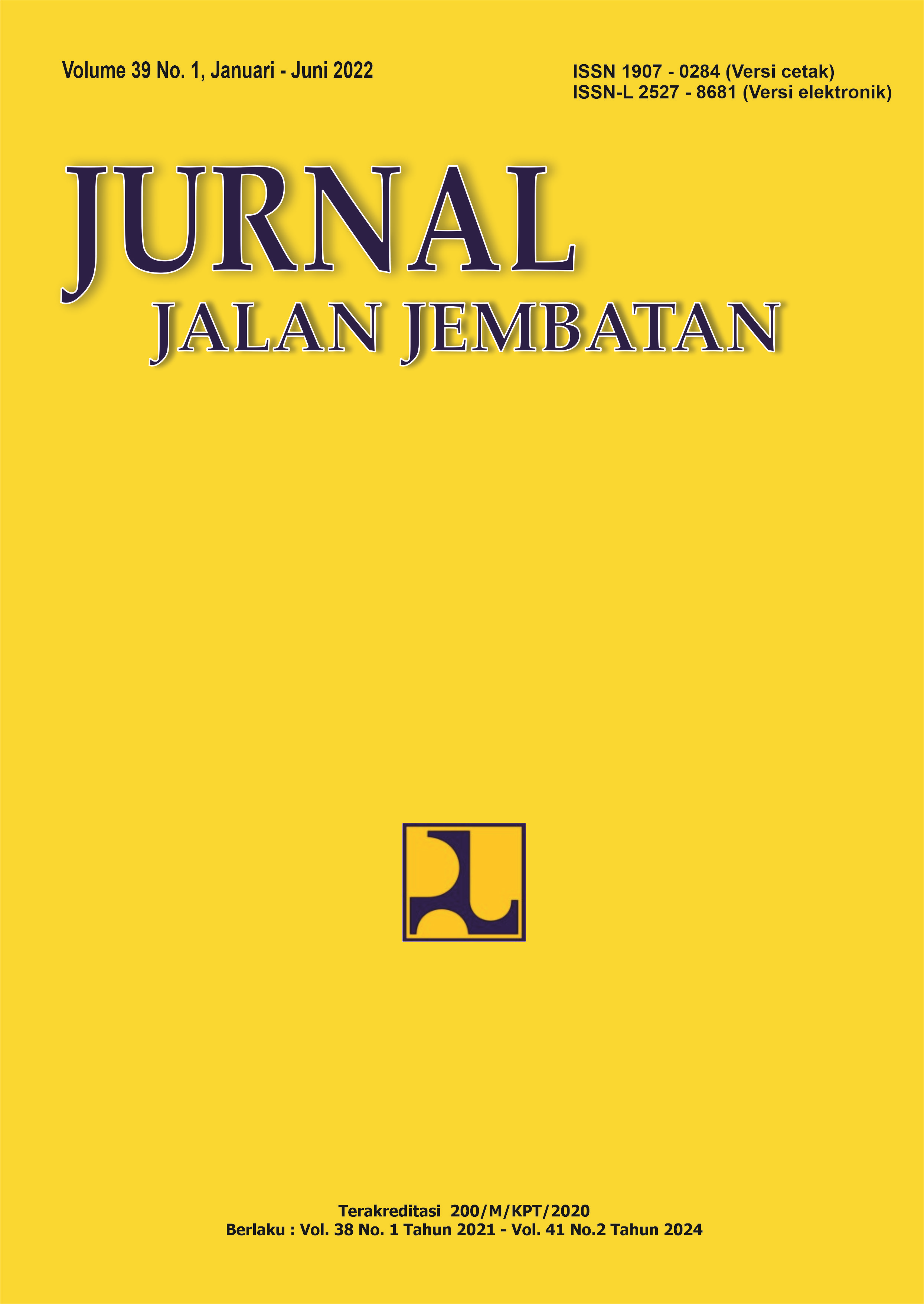DESIGN ANALYSIS OF ROAD IMPROVEMENT ON SOFT SOIL USING GALAM WOOD AND MINIPILE GROUPS
Main Article Content
Abstract
The road improvement of Sp.3 Janas (National Road) to STI along 2.5 km (Sta. 0+000 – Sta. 2+450) is carried out to support the development of the Belanti Food Estate area. The road has been built with a width of 3.5 m with single layer asphalt pavement and will be increased to 6.0 m wide and 3.8 m wide road shoulders (right-left). In the existing plan, the soil layer under the widening of the road will be installed with galam woodpiles as subgrade reinforcement. The need for large quantities of galam wood as subgrade reinforcement for road improvement is feared to have a negative impact on the environment, especially illegal logging. Therefore, minipile concrete pillars are an alternative for subgrade reinforcement used to prevent environmental damage due to the use of large amounts of galam wood. An analysis of the stability of the embankment and subgrade settlement was carried out by using the two subgrade reinforcements which were then compared in terms of strength to withstand loads and their cost requirements. The improvement of the Sp.3 Janas road (National Road) to STI along 2.5 km (Sta. 0+000 – Sta. 2+450) will cost Rp. 1,078,000,000,- for the use of galam wood and Rp. 31,752,000,000,- for the use of minipile concrete pillars. The total subsidence of 11.0 m of soil (depth -1.0 to -12.0 m) was 17.3 cm with a difference of 6.6 cm on the side of the road widening using galam woodpiles. If using minipile concrete piles, the total subsidence of the soil layer will be 13.3 cm with the difference in settlement on the widening side of the road using minipile concrete poles of 7.0 cm.
Keywords: soft soil, galam wood, woodpile, minipile, road widening
Article Details
Authors who publish in this journal agree to the following terms:
-
Authors retain copyright and grant the journal the right of first publication with the work simultaneously licensed under a Creative Commons Attribution License, which allows others to share the work with acknowledgment of the work's authorship and initial publication in this journal.
-
Authors may enter into additional contractual arrangements for the non-exclusive distribution of the journal's published version of the work (e.g., post it to an institutional repository or publish it in a book), with acknowledgment of its initial publication in this journal.
-
Authors are permitted and encouraged to post their work online (e.g., in institutional repositories or on their website) as it can lead to productive exchanges, as well as earlier and greater citation of the published work.
Each submitted manuscript must be accompanied by a "Manuscript Originality Statement" and a "Copyright Transfer Statement".

